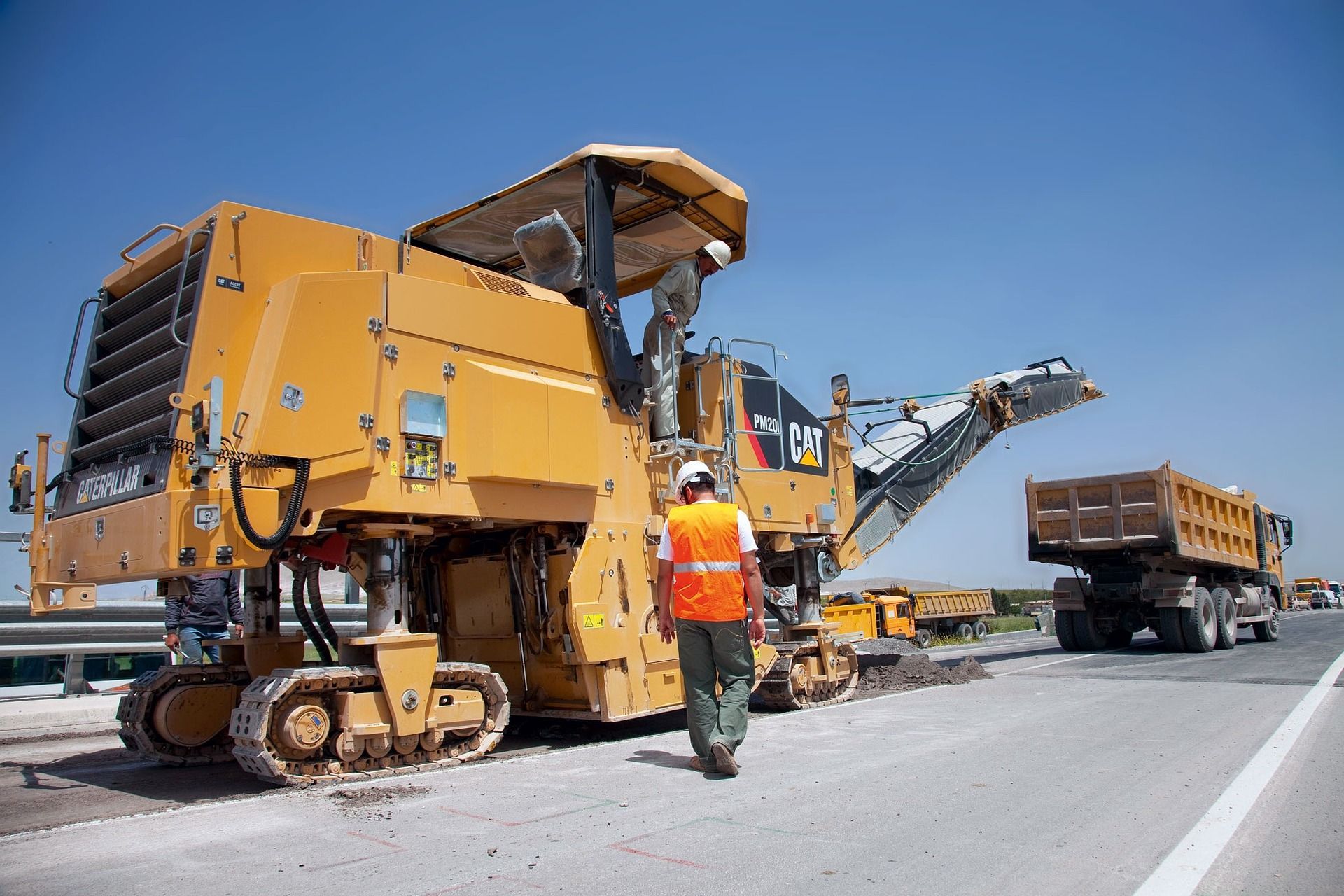To Mill or not to mill: A guide to repairing and resurfacing asphalt parking lots

Asphalt is a popular construction material used for roadways, parking lots, and other surfaces that require a durable and long-lasting surface. Over time, however, asphalt can begin to deteriorate, resulting in cracks, potholes, and other signs of wear and tear. When this happens, many property owners and managers turn to milling as a solution.
Milling is a process that involves removing a layer of asphalt from the surface of a roadway or other area. The milling process can be used to remove the top layer of asphalt or to remove multiple layers of asphalt in order to resurface the area. While milling can be an effective way to repair and resurface asphalt, it is not always the best choice, and there are several factors that should be considered before deciding whether to use milling or another approach.
One of the most important factors to consider when deciding whether to use milling is the thickness of the existing asphalt. If the asphalt is only a few inches thick, milling will cause serious problems for the customer and contractor. For example, if the asphalt is only 3 inches thick and you mill 1.5 inches off, you will be left with a surface that is only 1.5 inches thick. This can create several problems when you go to pave the area with heavy trucks (70,000 lbs) and equipment.
When heavy equipment drives over a surface that is too thin, it will cause the remaining asphalt to break apart. This creates an uneven surface that is prone to cracking, potholes, and other damage. In this example, the damage would be so severe that the entire surface will need to be removed and replaced. This can be a time-consuming and expensive process. I would estimate 3 times the cost to remove and replace, as opposed to resurfacing over existing asphalt.
Another problem with milling thin asphalt is that it can make it difficult to achieve a smooth and even surface. When you mill off a layer of asphalt, you create a rough and uneven surface that can be difficult to pave over. This can result in an uneven surface that is prone to cracking and other types of damage. In some cases, it may be necessary to add a leveling course in order to create a smooth and even surface before paving.
In my opinion, asphalt needs to be 4 inches thick or more to ensure milling can be safely done. In this case, milling can remove the top layer of damaged asphalt.
When deciding whether to use milling or another approach to repair and resurface damaged asphalt, it is important to consider several factors. These include the thickness of the existing asphalt, the condition of the surface, the type of traffic or other activity in the area, and the budget available for repairs. By taking the time to consider these factors and weigh the pros and cons of each approach, property owners and managers can make an informed decision about the best way to repair and resurface their asphalt surfaces.
In conclusion, milling can be an effective way to repair and resurface damaged asphalt surfaces. However, it is not always the best choice, particularly if the asphalt is too thin. When the asphalt is only a few inches thick, milling can create a surface that is too thin to support heavy equipment and may result in an uneven and bumpy surface that is prone to cracking and other types of damage. As such, it is important to carefully consider the thickness of the existing asphalt and other factors before deciding whether to use milling or another approach to repair and resurface damaged asphalt.

Expert Commercial Pavement Maintenance: Asphalt Resurfacing, Milling, Sealcoating, Line Striping, and Patching Services.
BROWSE OUR WEBSITE
CONTACT INFORMATION
Location: 217 Luxor Rd. Latrobe Pa 15650
Phone: (724) 832-8451
Fax: (724) 832-8451
Email: brantsasphalt@comcast.net
OUR LOCATION
All Rights Reserved | Brant's Asphalt LLC | HIC# PA 000636 | Website Designed by Blue Crocus Solutions


